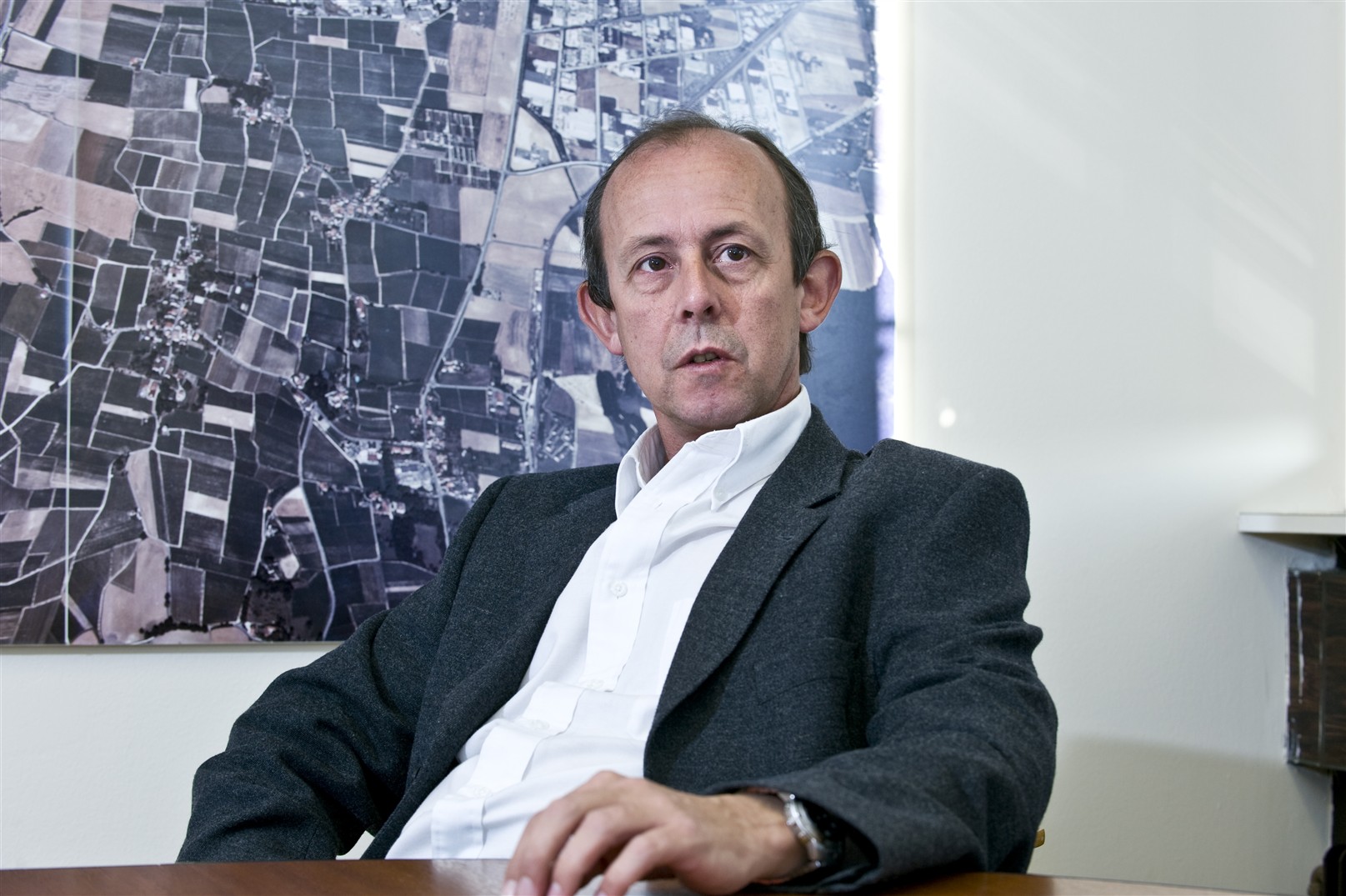Paul Collier : Balancing beams
As former head of AB Operations, Paul Collier and his group were in the ‘cockpit’ for the LHC’s maiden voyage - piloting the first beam around the ring. But now, as Head of the Beams Department, he will need his feet firmly on the ground in order to balance all the beam activities at CERN.

"As Department Head, I’ll have less direct contact with the machines," Collier says with a hint of regret. "I’ll still obviously be very involved, but they won’t actually let me loose in front of the keyboard anymore!" As the new Head of the BE Department, Collier will be in charge of nearly 400 people, and will oversee all the beam activities, including the preparations for the longest period of beam operation in the history of CERN.
In the new organization, the BE, TE and EN Departments have been grouped together in the Accelerator and Technology Sector. "‘Partnership’ is a key word for the three departments," says Collier. "The new structure has been organized to enhance the synergies across the whole sector, so that we have similar activities grouped more logically. The structure we had last year was principally designed for the construction of the LHC. Now we’re moving into a new regime where we are exploiting the LHC. So this clearly requires a slightly different emphasis to be placed. In the new structure all three departments are equal partners in the exploitation of the accelerator complex."
While the main task is to get the LHC up and running, the BE Department must also make sure it is prepared for what will be an incredibly long period of beam operation. The LHC will run from the end of September 2009 until October 2010, but hardware testing and powering will start as early as June this year. In addition, the rest of the complex will operate normally from April to November each year. "The first thing we need to do is look at the machines themselves and how they can cope with this, both the LHC and the rest of the complex," he explained.
A crucial part of preparing for the LHC restart is the restart of the injector chain at the end of the present winter shutdown. "From the point of view of the injector chain, setting up the LHC beam is an operational …" He pauses. "I’m not going to say ‘an operational routine’, because nothing about running an accelerator is ever routine!" He continues. "Having said that, we do already know how to produce exactly the beams the LHC needs. However, coming back on after a shutdown always requires careful set-up and tuning of the beams for all users, including the LHC."
In order to ensure that the entire run period goes smoothly the Department also needs to plan carefully how the injector chain will provide the beam for both the LHC and the normal clients, such as the fixed target programme, CNGS, AD, Rex/Isolde and n-TOF. While the other facilities will shut down as usual over winter, the LHC will still be running and will request beam from the injector complex ‘on demand’. "At this stage, the LHC simply needs a very good quality beam for (hopefully) a few hours per day while filling for a physics run. It doesn’t need very high intensities like CNGS or the fixed target experiments, so the injector complex will be less stressed than during normal operations," explained Collier. "This is one of the main reasons we can have such a long operational period. When not actually providing beam to the LHC, the injector complex will be put into ‘standby’ mode to save energy."
As well as making sure the machines can cope, Collier also needs to make sure his staff can cope. This long period of ‘run time’ will be gruelling both for the machines and the personnel, and avoiding any ‘burnouts’ is a key objective for both! "There is the human side too," confirmed Collier. "Normally there are periods of operation, where some teams are more active, and periods of shutdown with other teams more active. Now it’s going to be more or less full blast for everyone! Clearly we will have to pace ourselves."
As well as performing the balancing act of providing beam for the LHC and all the other facilities, the BE Department is also looking to the future. Staff from the Beams Department are involved in a number of R&D activities, including CLIC, LINAC 4 construction and the other LHC upgrade projects.
Paul Colliers’ CV in brief
Paul Colliers’ career at CERN began in the late 1980s. While lecturing at Sheffield Hallam University in England, he met Nobel Prize winners Carlo Rubbia and Simon van der Meer. This helped inspire him to come to work at CERN.
He joined CERN as a fellow in 1987, working on the LEP-RF system. He later moved into the Operations Group for the SL Department and became engineer in charge of operating LEP. He then became machine coordinator at LEP, which he continued until the machine was dismantled in 2000. In parallel, he worked on the upgrade of the SPS from 1996 until its completion in 2005. He then became head of the AB-Operations Group in 2005. He has been head of the Beams Department since January 2009.

